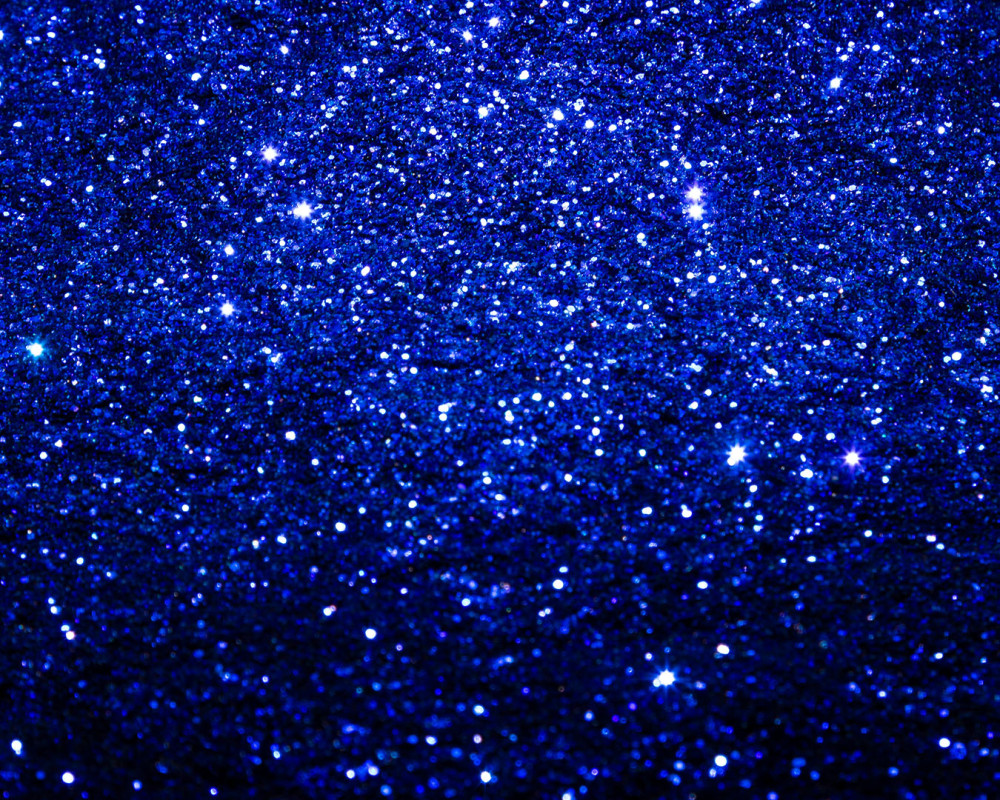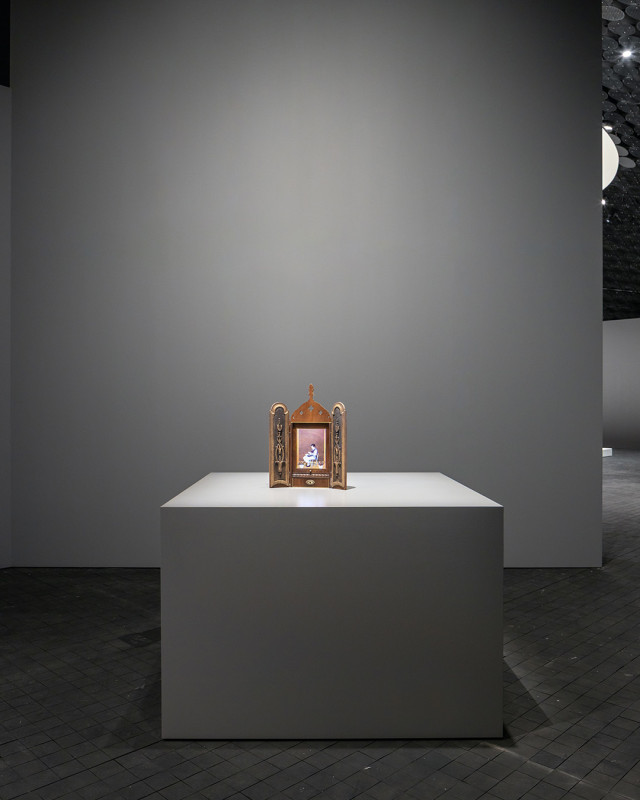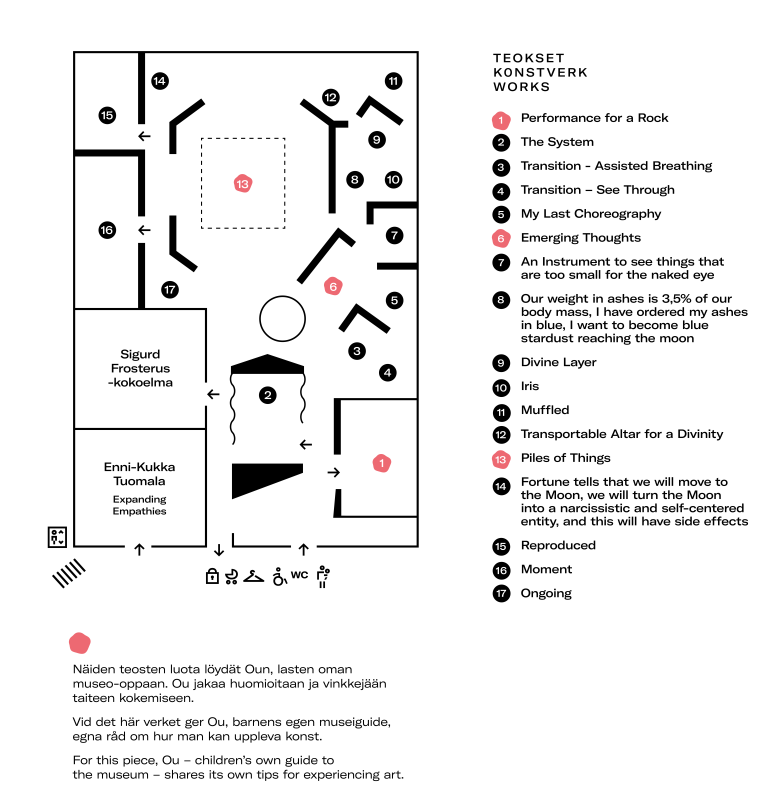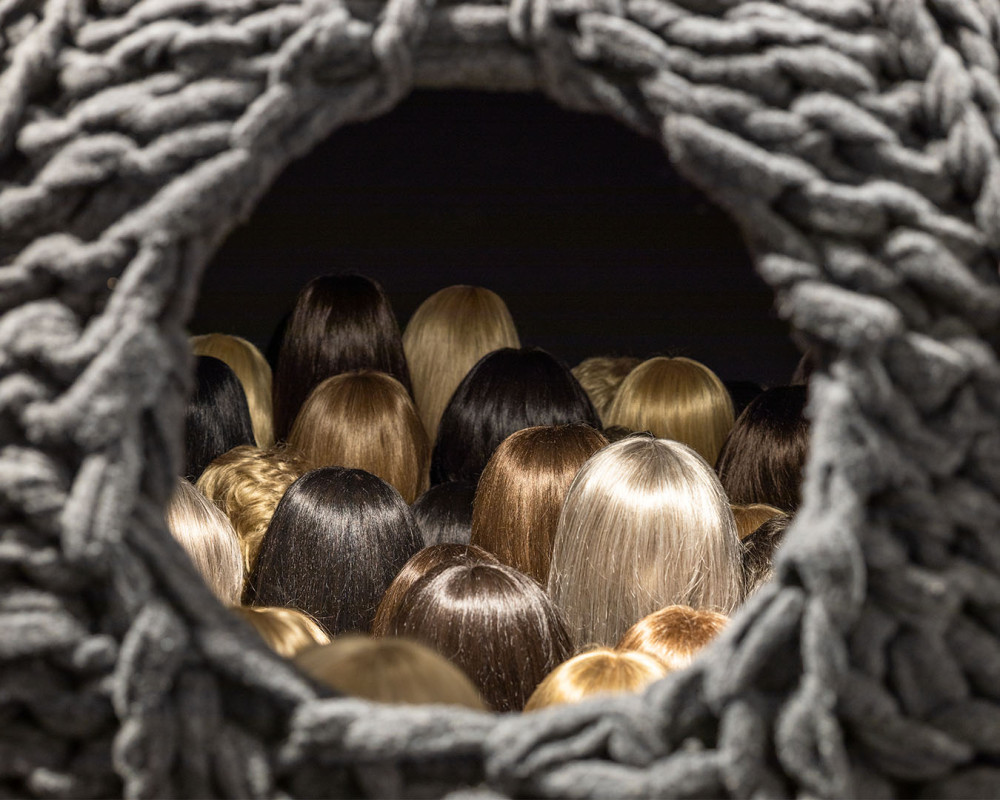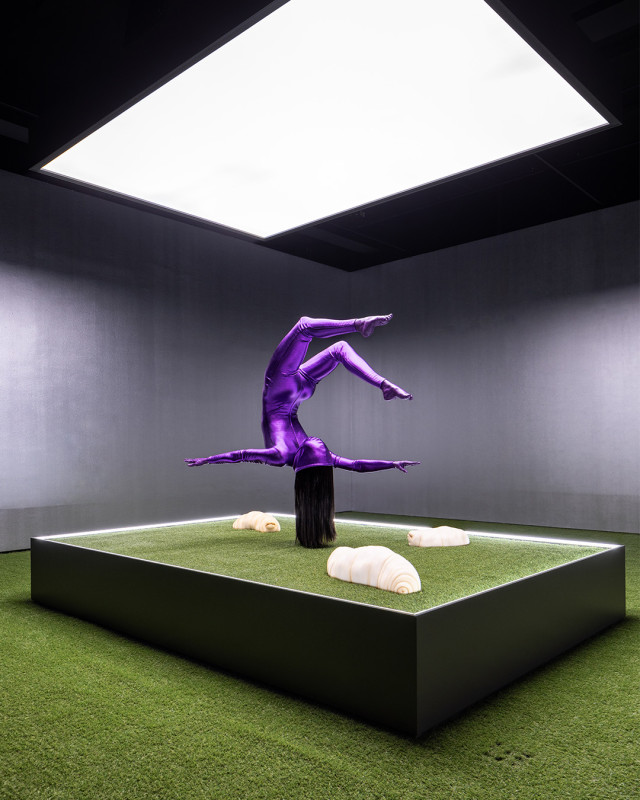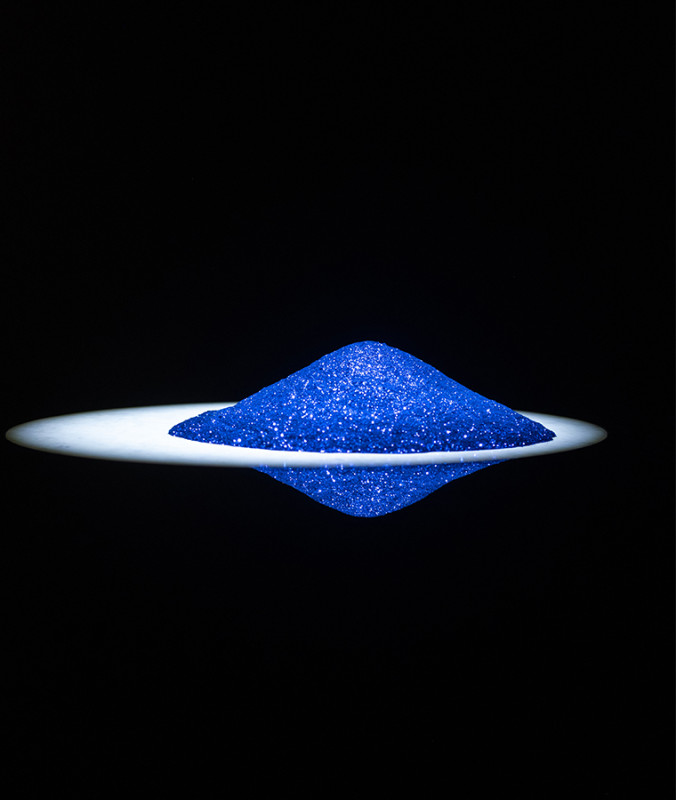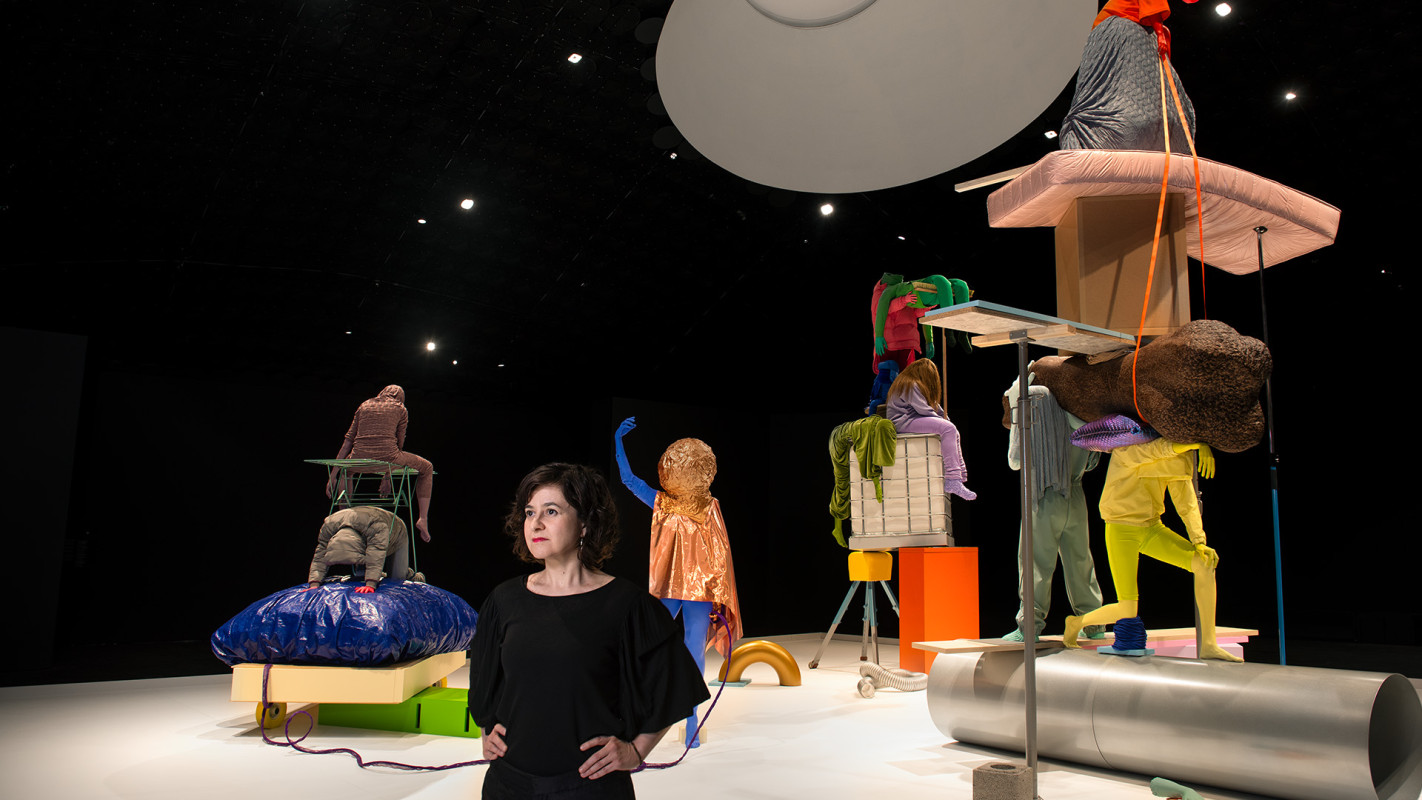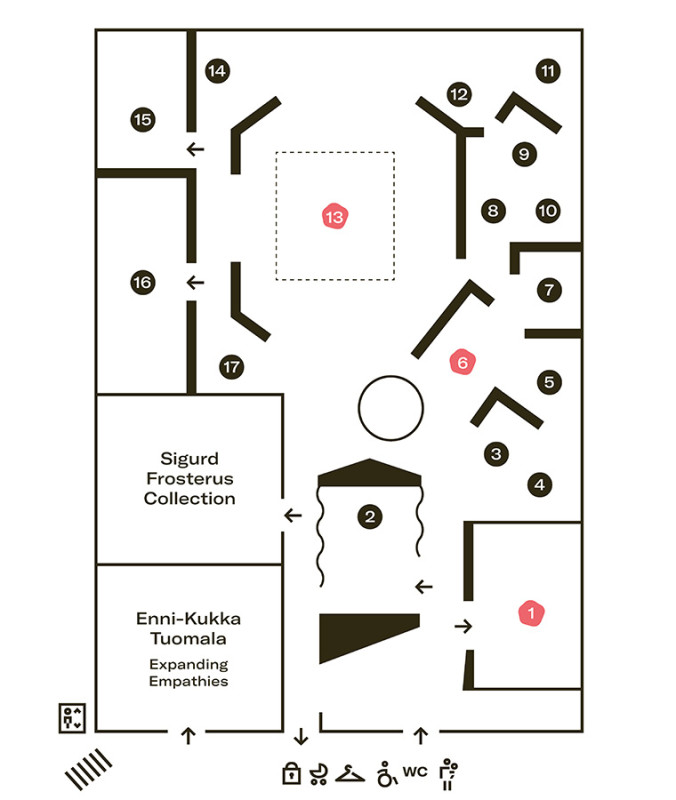
Anna Estarriola: Staged Circumstances and Piles of Things 2.4-31.8.2025
Staged Circumstances and Piles of Things
2.4 - 31.8.2025
In Anna Estarriola’s exhibition Staged Circumstances and Piles of Things an acrobat stands on their hair, various elements that have arrived from different parts of the universe give speeches at a table, and whispers are heard from inside a giant beanie hat. The boundaries between the impossible and the possible are blurred, and our ways of perceiving reality are examined from numerous different angles. In her installations, Estarriola combines sculpture, moving images, sound, electronics and performance art. These multidimensional works depict a striving for communication, understanding and cooperation, as well as the inextricably linked moments of uncertainty and failure.
The Catalan-born Estarriola’s diverse background in art and her collective, exploratory working method bring a wide-ranging approach to these works, both in terms of technique and their themes. Estarriola, who has studied sculpture, time and space arts and contemporary dance, is known not only for the media installations but also for her performance-art works. For example, the performances Show and Ventriloquized, which premiered in 2015, made use of video, text and objects, along with physical movement. Meanwhile, Estarriola’s installations offer ample performative features and reflections on movement and immobility.
Anna Estarriola’s working process begins with small, imaginative sketch drawings. Their practical realisation requires extensive technical and theoretical knowledge, which is why she often creates her works in close collaboration with professionals from different fields – for example, a textile designer, choir singer, doctor, or dancer - might participate in the production of an installation. Estarriola frequently draws influences from the sciences and different belief systems, while also broadening her own understanding of how people and things function and exist. The illusions conjured up before our eyes are thus based on careful background research and on a working method in which encounters and dialogue between people are of great value during the process itself. Amid these works filled with significant details there is an emphasis on life – and death – as well as a kind of relentless attempt to explore individual and communal behaviours and different ways of communicating.
Anna Estarriola: Transportable Altar for a Divinity, 2015.
Image: Aukusti Heinonen / Amos Rex
The exhibition contains works from the last ten years. One of the earliest pieces is the video installation Transportable Altar for a Divinity. Acquired in 2015 for the collections of Föreningen Konstsamfundet, which owns Amos Rex, the work stages the minor chores of everyday life as something divine. After the exhibition, the work will be returned to the chapel in the Amos Andersons Hem home museum. The most recent work is Piles of Things, a three-part installation especially completed for the exhibition, reaching up towards the museum’s ceiling in defiance of gravity, and perhaps at the same time towards some higher or yet unknown entity.
In Amos Rex’s underground halls the works create a kind of undulating rhythm that runs through the exhibition’s world on micro and macro levels. The scales and distances vary from one work to the next, and different senses are activated by the shifting perspective. The multiple layers and nested views that gradually emerge from the installations are like scenes from an endless drama, or staged circumstances that we can peer into from different angles. In these artworks, which play with diverse materials, there is a recurrent wonder at both the concept of truth and at the various ways of being, while not shying away from clumsiness or difficult questions, to which there may not be just one right answer.
The exhibition is accompanied by a series of events! Read all about it at Amos Rex' website: amosrex.fi/en/events
Exhibition map
The curator's take
Piles of thoughts in Anna Estarriola’s art
Katariina Timonen, exhibition curator
On connections and understanding
In Anna Estarriola’s art, and in her working process itself, what is important is the attempt to communicate with others. The questioning approach that runs through Estarriola’s output also permeates her working methods; cooperating with experts from different disciplines feels natural and often takes her forwards, to the work’s final form and appearance. At other times, her idea for an artwork is so clear from the start that she mainly needs aid in realising this vision in concrete form, a process in which Estarriola herself is, of course, actively involved.
The beauty of this mutual, shared working process emanates from the finished works in a kind of profoundly human undertone: in the tendency to ask when you don’t know, the courage to utter unfinished thoughts out loud and, above all, in a genuine interest in the world and your fellow living beings.
This inspiring and in many ways rewarding way of working culminates in Estarriola’s latest piece, Piles of Things. Besides Estarriola, a large number of other professionals have collaborated on creating the soundscape alone, including a sound designer, choir singers, and a studio sound engineer. The involvement of various people has made it what it is now – something that has gradually grown and been built up on the basis of the original idea, while everyone who shared in its making has contributed something valuable. That fondness for doing and experiencing things together also extends to the response to the finished work now in the exhibition. The audience’s experience of it again generates new layers and completes it in various ways.
Anna Estarriola: Emerging Thoughts, 2015.
Image: Aukusti Heinonen / Amos Rex
On reality and illusions
Embedded in Piles of Things are many of the themes that have stayed with Estarriola year after year, and which she has dealt with in diverse ways in a number of works over the course of her career. From the very start, she has used her art to reflect particularly on how people behave in different situations, and on numerous ways of envisaging and observing reality, while also communicating something in the middle of all this. In Estarriola’s art, reality can come in the guise of realistic elements, and as something which at first seems to be an absurd departure from customary patterns, or even as a surprising play with proportions. Despite all this, something in her sculptural media art feels familiar, and we can even identify with it, whether the focal point is a talking envelope or a cold lump of stone, as in The System and Performance for a Rock.
With the aid of metaphors, illusions and visual references, Estarriola traces out a fascinatingly variegated picture of the small, meaningful and meaningless things that make up our existence, with all its successes and failures. Helplessness is very much a part of this, although sometimes the scenes that she conjures up, which operate on both an individual and a communal level, speak equally of an attempt at control. Nevertheless, she cannot, nor does she want to, avoid fumbling and missteps, since they are what creates interesting fault lines, both on and under the surface of the works.
Anna Estarriola: Moment, 2023.
Image: Aukusti Heinonen / Amos Rex
On time and eternity
Although it is possible to see reflections on power structures in Estarriola’s art, she still tries to show the beings, phenomena and articles depicted in her works as each other’s equals, without hierarchies. Piles of Things depicts stacked layers of diverse objects and elements but, instead of a hierarchical order, it conveys more of a shared aspiration to reach some higher power. Those lower down are not subordinate to those higher up; each one does its own bit, some more actively, others more passively.
With many of these works, the experience of time seems to be somehow blurred – the situations staged before us are simultaneously happening in the present moment, continuous, and perpetual. Although these are installations, they also contain elements of performance art that accentuate their momentary nature. Disappearance, slipping into infinity or eternity, is perhaps already around the next corner or the next moment, while the movement is present right here and now, either concretely or frozen on the spot. Passages between two moments, kinds of in-between spaces, can be seen not only in the duo of works in Transition, but also in others, such as Piles of Things and Moment.
And yet a broader, more historical concept of time is also powerfully present. The stories and scenarios that Estarriola creates are interwoven with the evolution of humankind, in which knowledge and stupidity have developed side by side, causing dramatic changes in our environment.
Anna Estarriola: Our weight in ashes is 3,5% of our body weight, I have ordered my ashes in blue, I want to become blue stardust reaching the moon (detail), 2015.
Image: Aukusti Heinonen / Amos Rex
On uncertainty and listening
Estarriola’s works are frequently based on scientific research and, conversely, on the means provided by various belief systems for addressing and explaining the unknown and unseen. The many faces and changing definitions of truth are reflected in her output in a kind of welcome ignorance and in a questioning of the familiar. In their way, these dramaturgically rich works are striving to get away from certainty and the need to be right. Rearticulating and reordering reality, playing with proportions and perspectives, and taking the context of the space and the performance setting into account are integral to her artistic practice.
Estarriola’s way of investigating and manipulating reality relies not only on sculpture, but also on the methods of audiovisual media art. Her multifaceted use of moving image and technology supports the performative and narrative structures of her works, creating intriguingly tangible illusions of existence, presence, and a variety of encounters. Human-designed devices, their effects and consequences, the continuous development of technology, and the borderlines between authenticity, naturalness and artificiality are present here in numerous ways.
As you pass through the exhibition, it is worth stopping occasionally to listen more carefully, since, in addition to the more resonant audio world of Piles of Things, some of the installations contain sounds that may go unnoticed by someone in a hurry: for example, the muted mumble emanating from beneath the skin in Muffled greatly affects our experience of it. Of course, Estarriola’s works appeal to more than just our senses of hearing and sight. In addition to their shape, the different materials play an important and temptingly haptic role, and – even though touching the works is not allowed – our tactile sense is activated, especially when we are faced with Transition – Assisted Breathing. In Estarriola’s world, everything is impossible and possible, all at once.
About the artist
Image: Stella Ojala / Amos Rex
Anna Estarriola (b.1980) is a Catalonia-born visual artist who has lived and worked in Helsinki since 2004. She studied sculpture at the Barcelona Academy of Art and graduated in 2004. Estarriola gained her Master of Fine Arts degree from the Academy of Fine Arts of the University of the Arts Helsinki in 2009, where she studied on the Time and Space Arts programme. She has also studied contemporary dance in Barcelona and Helsinki.
Estarriola’s works have been shown in numerous exhibitions in Finland and abroad, including Los Angeles, Berlin, Norrköping, Madrid and Seoul, and are in the collections of many Finnish museums and foundations, such as Finnish National Gallery, Jenny and Antti Wihuri Foundation, Pori Art Museum and Saastamoinen Foundation. Her video works and performances, in which she has been both director and performer, have been shown at international performance-art festivals and in various dance and theatre productions.
In 2015, Estarriola received the prestigious AVEK Award, which is given annually by the Promotion Centre for Audiovisual Culture to a distinguished artist working in media arts or other audiovisual culture in Finland. In 2019, she was awarded a five-year state artist grant.
Amos Rex’s exhibition is Estarriola’s largest solo exhibition to date.
Amos Rex for kids
Meet Ou. Ou likes children, for they often understand it better than grown-ups. You see, it is sometimes difficult for Ou to control its feelings, not to mention energy.
Check out Ou's tips for visiting the exhibition!
Ou has noticed that art can be experienced in lots of different ways. There are artworks that you can sit in, others invite you to press a button, while many of them are so fragile that you can’t touch them at all! Anna Estarriola’s works are just like that. Ou has figured out why this is so, and how to approach artworks that can’t be viewed up close.
Ou has put tips on the exhibition walls for three works:
Performance for a Rock (1)
Emerging Thoughts (6)
Piles of Things (13)
Keep in mind that Ou can’t reach very high, so look lower down to find the tips.

